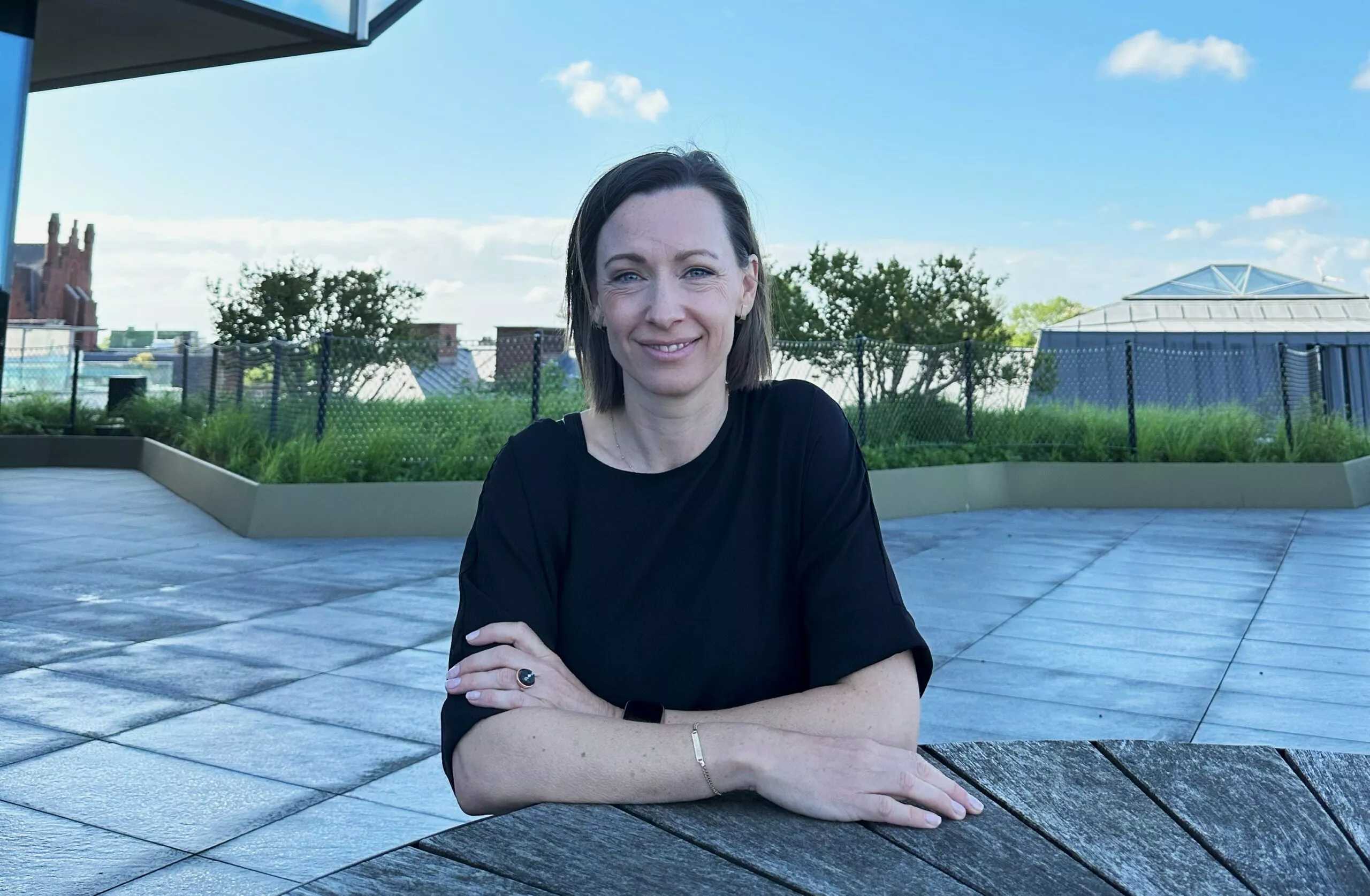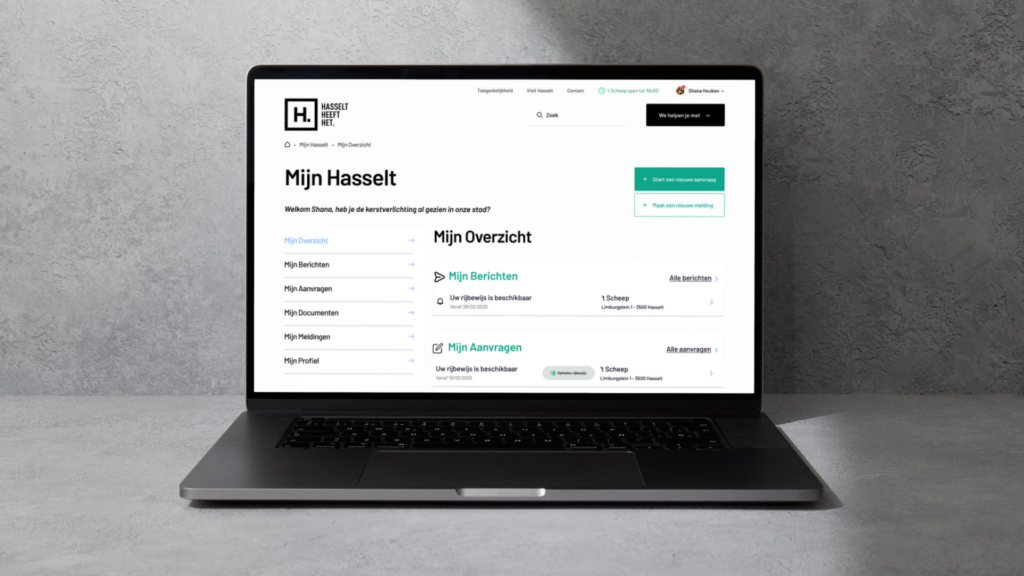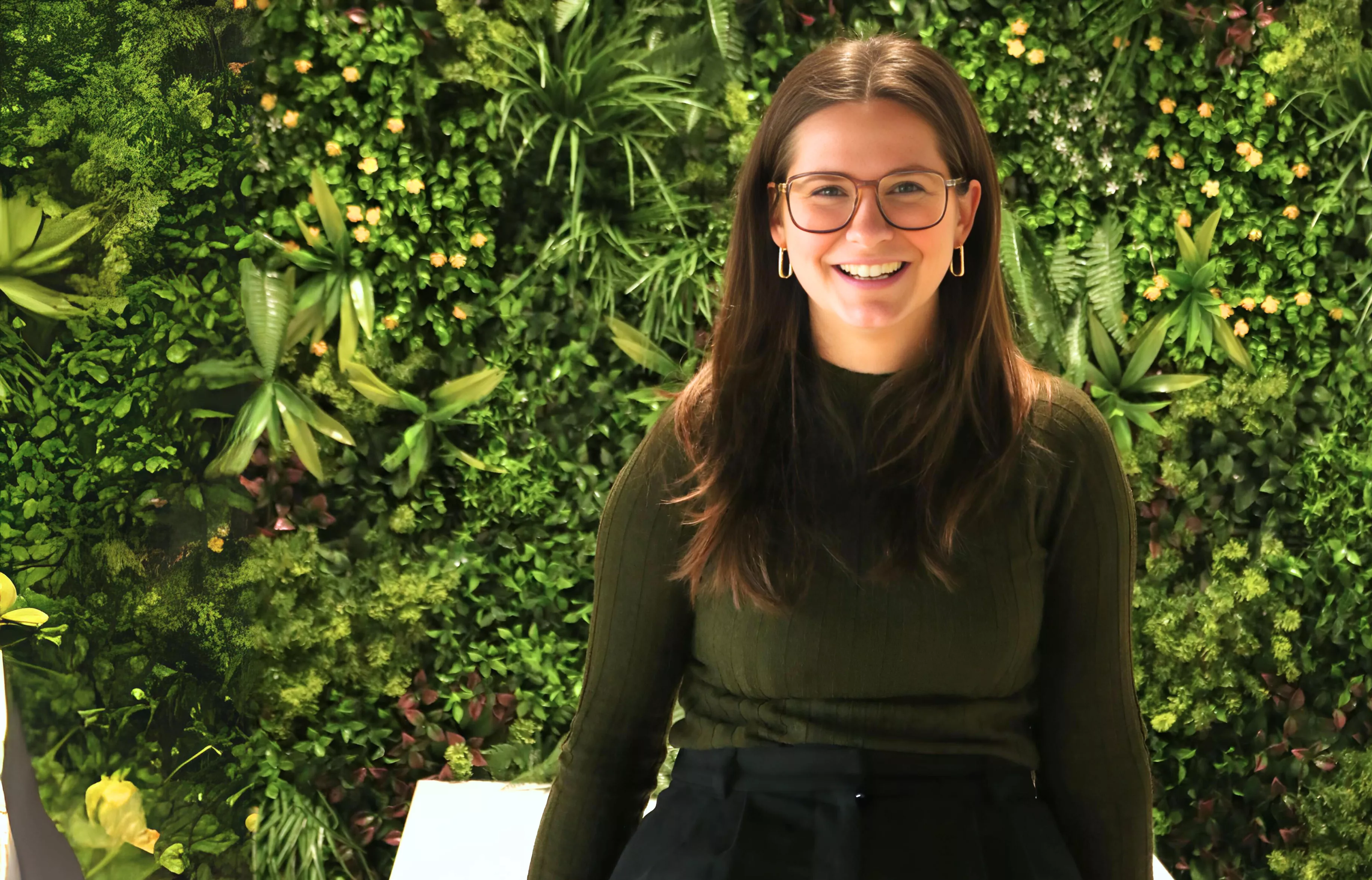
Client Stories
Shaping a new customer zone for the city of Hasselt
From a broad idea to a crisp product vision
City of Hasselt aimed to explore how a digital customer zone could improve and streamline interactions with citizens, businesses, and associations. To move from ambition to a clear plan, the city collaborated with The House of Marketing. Together, we defined the scope, explored user needs, and developed a vision, concept, and technical foundation for future development.
1 As-is analysis
2 Product vision & feature definition
3 UX concept & validation
4 IT architecture blueprint
1 — As-is analysis
The first step was understanding the as-is situation and landscape. We took the time to align everyone around the current situation. Instead of starting from assumptions or predefined problems, we looked at how people interact with the city today.
- What are the main reasons they visit the website?
- What kinds of questions come in through the contact center?
- Which digital touchpoints already exist?
- …
By combining internal insights and user behavior, we created a clear and shared picture of the starting point.
This gave the team a well-supported understanding of the as-is user experience, what’s already working, where the friction lies, and which technical and organizational factors might influence future decisions.
💡 Insight spotlight
Start with reality, not assumptions.
Users can’t always express what they need. Especially when the concept is new. Observing behavior first helped ground the project in real use cases.
2 — Product vision & feature definition
With a clear view of the current experience, we focused on shaping what the customer zone could become. Together with the team, we defined a product vision that made sense for the different target groups, while keeping things concrete and achievable. Through collaborative workshops, we identified ‘jobs to be done’ which formed the foundation for the feature set.
We also introduced a set of key product principles early on. These helped everyone stay aligned on what the platform should stand for and how choices should be made going forward. The result was a grounded and realistic starting point to guide the rest of the process.
What took shape:
- A focused product vision with prioritized audiences
- Clearly defined categories of features and services
- Tangible product principles as an anchor for future work
3 — UX concept & validation
With the vision in place, we began designing what the experience could actually look like. Defining core journeys across different channels, including those where citizens might start from outside platforms and move into Hasselt’s ecosystem.
These ideas were then turned into an early UX concept and wireframes. Instead of jumping to visual design, we took these low-fidelity concepts to real citizens and entrepreneurs. The timing of this validation was key! By now we could test specific hypotheses, present structured concepts, and ask targeted questions. This made the feedback more relevant and actionable.
“In the past, we often started from technical solutions. This time, we took a step back and let the citizen journey lead the way.”
– Leen Penders, Head of Digital Communication at Stad Hasselt

What took shape:
- A validated UX concept of the new customer zone
- Structured feedback from different users
- Iterations that improved clarity, structure, flow and technical requirements
💡 Insight spotlight
Validate when there’s something to react to.
Early interviews wouldn’t have revealed much. At this stage, we had enough structure to ask better questions and got better insights in return.
4 — IT architecture blueprint
The final step translated the defined needs into a feasible technical approach. Starting from the validated user flows and requirements, we developed an IT architecture that balances long-term vision with practical constraints.
Different integration solutions, dependencies, and capabilities were mapped out to prepare for future development. This technical foundation now enables the city to move forward with confidence.
“We delivered strong results in a short time, gained new insights as a team, and built solid support within both the project group and management.”
– Leen Penders, Head of Digital Communication at Stad Hasselt
This project helped City of Hasselt turn a broad ambition into a clear, structured approach. By focusing on user needs, co-creation and a solid approach, the team created a strong product vision, UX concept and IT architecture.
You may also like
Discover smart tips, personal stories from our clients and our take on the latest marketing trends


